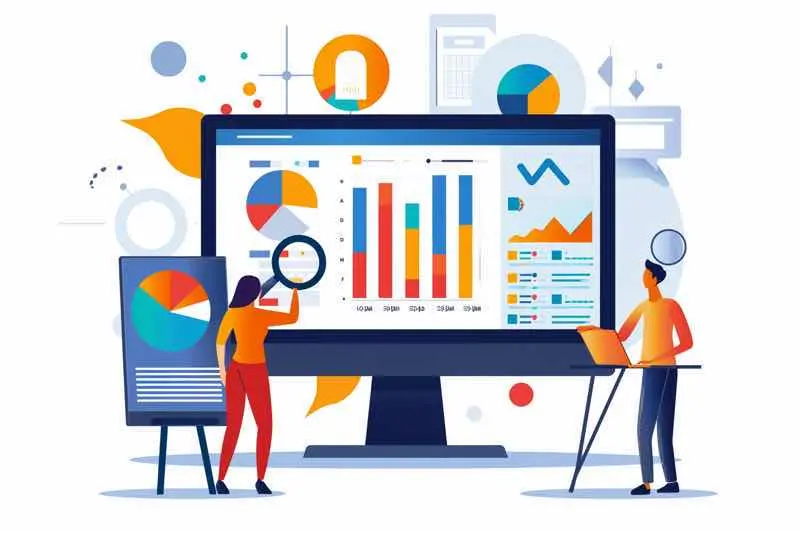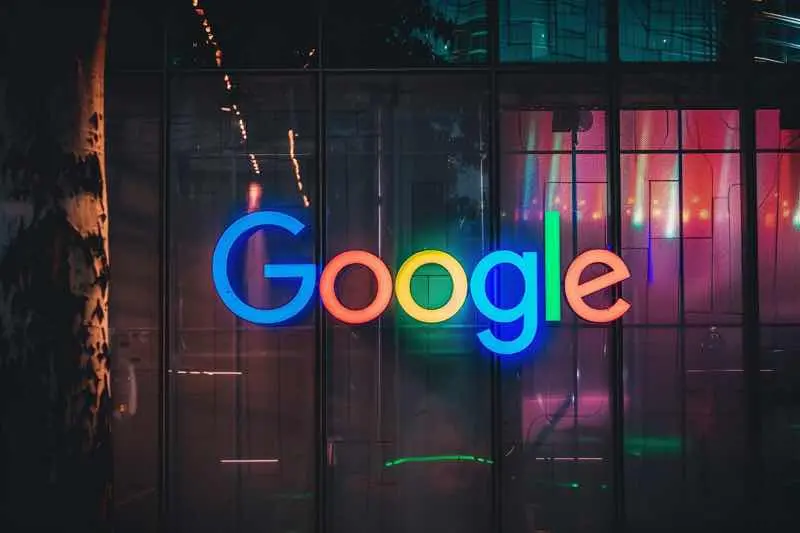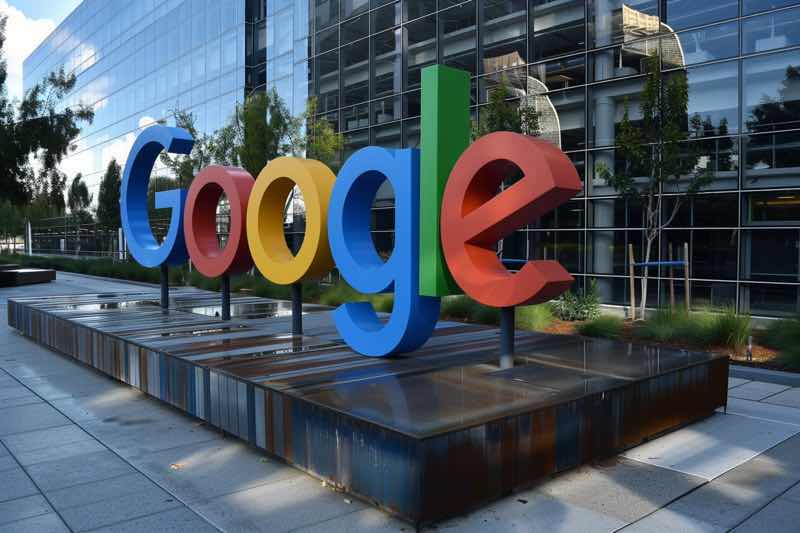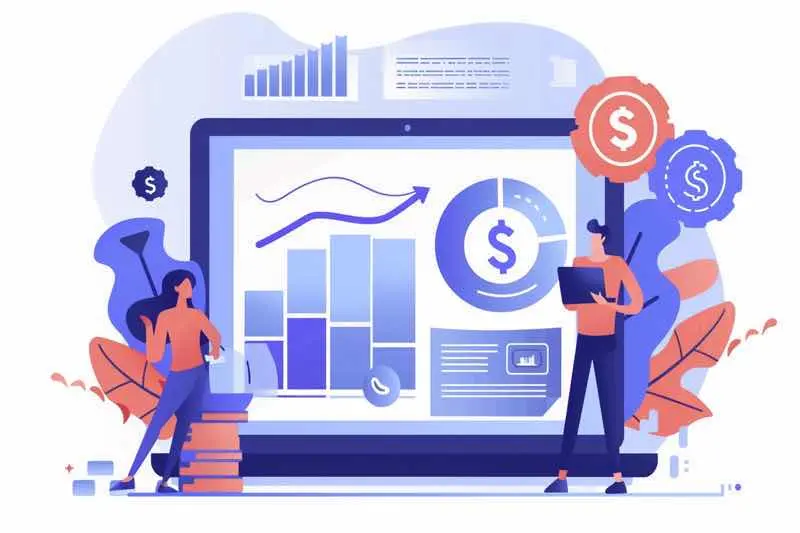Google Ads has revolutionized the advertising industry by offering targeted advertising and a cost-effective advantage. It has lowered advertising costs for businesses and increased competitiveness in the industry. However, it has also brought challenges such as click fraud and the need for budget optimization. This article explores the impact of Google Ads on advertising costs and compares it to traditional advertising.
Daftar Isi
BeralihHal-hal Penting yang Dapat Dipetik
- Google Ads has revolutionized the advertising industry by offering targeted advertising and a cost-effective advantage.
- It has lowered advertising costs for businesses and increased competitiveness in the industry.
- However, it has also brought challenges such as click fraud and the need for budget optimization.
- Measuring ROI and leveraging analytics are crucial for effective Google Ads campaigns.
- The future of advertising may be dominated by Google Ads as it continues to disrupt traditional advertising channels.
The Rise of Google Ads: Revolutionizing Advertising Strategies

From Traditional to Digital: How Google Ads Changed the Game
While some advertisers may lament the loss of granular control and transparency, there’s no denying the efficiency and effectiveness these advancements bring. The dual perspectives on these changes—technological advancement versus a push for increased advertising revenue—highlight the complex nature of the industry’s evolution. It’s a balancing act between enhancing user and advertiser experiences and the commercial imperatives of major platforms like Google and Meta. For those of us navigating these changes, it’s important to stay up to date on how the decisions Google makes impact our.
Unleashing the Power of Targeted Advertising
Targeted advertising is a game-changer in the world of online marketing. With Google Ads, businesses can reach their ideal customers directly, thanks to precise targeting options like keyword selection, location-based targeting, and demographic filtering.
Unlike traditional advertising methods that rely on broad audience targeting, Google Ads provides advertisers with the power to narrow down their audience and connect with those most likely to convert. This not only reduces wasted ad spend but also improves the quality of leads. By enhancing targeting precision, businesses can maximize their ROI and make every dollar count.
Exploring Alternative Bidding Strategies
Experimenting with different bidding strategies can also yield cost-effective results. For instance, using manual bidding gives advertisers greater control over bid amounts, allowing them to optimize their ad spend. By carefully monitoring and adjusting bids, businesses can ensure they are getting the most out of their budget. Additionally, Google Ads offers advanced targeting options such as demographic targeting, interest targeting, and remarketing, which can further enhance the effectiveness of ad campaigns.
Immediate Results and Budget Control
One of the key advantages of Google Ads is the ability to generate instant traffic to websites or landing pages. Unlike organic search engine optimization (SEO), which takes time to show results, Google Ads campaigns can deliver immediate traffic and visibility. This is especially valuable for businesses looking to quickly increase their online presence and drive conversions. Furthermore, Google Ads offers flexibility and control over budgeting. Advertisers can set daily budgets and bids based on their specific goals and financial capabilities. This allows businesses to have full control over their ad spend and ensures that they are not overspending.
In conclusion, targeted advertising through Google Ads has revolutionized the way businesses reach their audience. By leveraging precise targeting options and exploring alternative bidding strategies, businesses can lower their advertising costs while maximizing their ROI. The immediate results and budget control offered by Google Ads make it a powerful tool for businesses of all sizes. With the right approach and careful optimization, businesses can achieve significant returns on their ad spend and stay ahead in the dynamic landscape of online advertising.

The Google Ads Auction: Understanding the Bidding Process
The Google Ads auction is like a bustling marketplace where advertisers bid for prime real estate – eyeballs on Google’s search results and display network. It’s a dynamic system where the highest bids and most relevant ads claim the spotlight. Predicting the impact ofGoogle Ads on advertising costs in this ever-shifting landscape can be challenging, but fret not, we’ll equip you with the tools to navigate it.
Factors that Influence Cost
- Quality & Relevance: Google rewards well-crafted, relevant ads with lower costs. Think of it as presenting a gourmet dish versus a soggy sandwich – quality matters.
- Campaign Settings: Your bidding strategy and budget play a crucial role. Do you want quick wins with high bids or a slow burn with a budget cap? The choice is yours, maestro!
How Google Determines Your CPC
The magic behind your CPC (cost per click) lies in an auction called the ‘ad rank.’ This rank, a complex blend of your bid, ad quality, and keyword relevance, determines your ad’s position on the page. The higher your rank, the lower your potential CPC, as Google rewards relevance and quality.
Tips for Savvy Advertisers
While Google Advertising costs may seem like a tangled web, fret not! Here are some tips to weave your way to success:
- Keyword Research: Unearth hidden gems – low-competition, high-intent keywords that offer a bang for your buck.
- Quality Over Quantity: Craft compelling, relevant ads that resonate with your target audience.
- Budgeting & Bidding Strategies: Experiment with different strategies to find the sweet spot between cost and reach.
- Monitor & Analyze: Track your campaign performance like a hawk, making adjustments as needed.
Remember, Google Ads is a journey, not a destination. By understanding the factors that influence cost and employing strategic tactics, you can navigate the maze of Google Ads pricing and emerge victorious, your brand shining brightly in the digital landscape.
Maximizing ROI: Tips and Tricks for Effective Google Ads Campaigns
Google Ads ROI in a nutshell! The competitiveness of your chosen keywords, the strategic placements of your ads, and the sheer brilliance of your ad quality can make or break your ROI game. It starts with a dash of thorough keyword research (super important), sprinkled with optimized ad copies, and ends with finely-tuned landing pages. Blend these together, and voilà! You’ve got yourself a recipe for maximizing your advertising budget like a pro.
Dampak Iklan Google pada Biaya Iklan
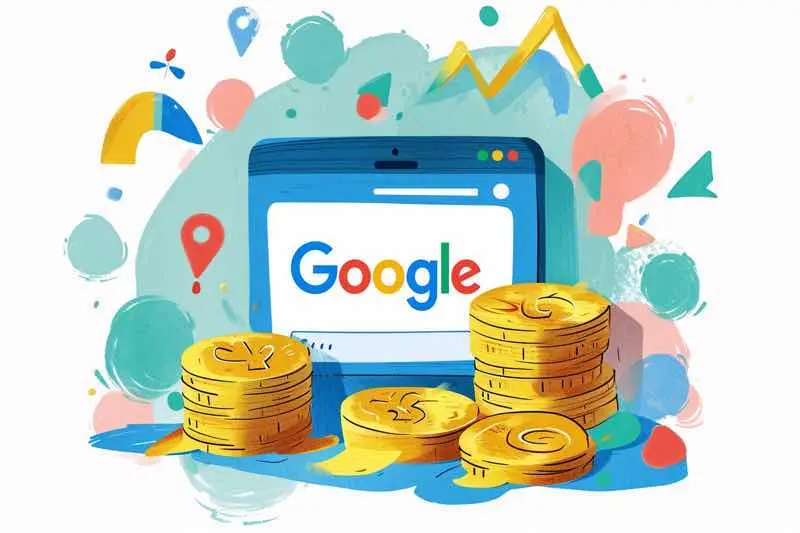
Small Business Wins With Google Ads
Many small businesses have reaped the rewards of a well-executed Google Ads campaign. These success stories highlight the platform’s ability to level the playing field, allowing small players to compete in a crowded market. Through targeted campaigns and strategic bidding, businesses have seen significant increases in web traffic and sales conversion rates.
Calculating Your Google Advertising Expenses
When investing in Google Ads, it’s crucial for small businesses to rigorously assess advertising expenses to ensure the marketing investment translates into tangible results. Utilizing Google’s Keyword Planner for estimated costs and working backward from your desired ROI can help you determine an appropriate advertising budget.
Adjusting And Optimizing Your Ad Spend Over Time
A successful Google Ads strategy involves constant testing and adjustments. Analyze performance data regularly to tweak your bids, refine targeting, and optimize ad creatives. This enables cost efficiency and better performance over time.
Strategically Lowering Google Ads Costs For Small Business
As small businesses grapple with ever-changing digital marketing landscapes, optimizing Google Ads costs becomes a crucial strategy. By making strategic adjustments in advertising investment, businesses can bring down expenses and enhance campaign performance. Intelligent keyword selection, ad monitoring, and staying ahead of industry trends are key factors in achieving cost-effective campaigns.
The Effect of Google Ads on Competitiveness in the Advertising Industry
Google Ads has had a profound impact on the competitiveness of businesses in the advertising industry. By utilizing Google Ads, companies can gain a competitive advantage and effectively compete in their respective industries. This also means Google Ads impacts advertising cost significantly scross the board. The platform offers various features and tools that enhance the visibility and interaction options for businesses. Here are some key ways Google Ads has influenced competitiveness:
- Competitive advantage: If other companies are utilizing Google Ads, not doing so yourself could place you at a significant disadvantage. Having a presence in Google’s search results with well-crafted ads can help you compete effectively in your industry.
- Ad extensions: Google Ads provides you with the ability to add additional information to your ads, such as location information, call buttons, site links, and more. These extensions enhance your ad’s visibility and increase the options that users have when it comes to interacting with your business.
- Remarketing: Google Ads allows you to target users who have previously interacted with your website or app. This remarketing feature helps businesses stay top-of-mind and increase the chances of conversion.
By leveraging these features and strategies, businesses can stay competitive in the advertising industry and maximize their advertising efforts.
The Rise of Click Fraud: Challenges in Cost Management
One common challenge in managing the cost of Google Ads campaigns is the increasing cost of ads. As more businesses flock to Google Ads, the competition for keywords and ad placements intensifies, leading to higher costs. To combat this, businesses need to focus on optimizing their Quality Score, which can lower cost-per-click (CPC) and improve ad placement. This is a definite impact of Google Ads on advertising costs.
Adapting to the Google Ads Ecosystem: Strategies for Budget Optimization
As small businesses grapple with ever-changing digital marketing landscapes, optimizing Google Ads costs blooms into a crucial strategy for 2024. To champion this economic battlefield, strategic adjustments in advertising investment can bring down expenses and enhance campaign performance. Let’s explore how intelligent keyword selection, ad relevance, and feature utilization choices can trim down Google Ads expenses without sacrificing reach and effectiveness.
Keyword Research And Selection: Finding The Sweet Spot
Keywords form the backbone of Google Ads, directly influencing the campaign’s success. By conducting thorough keyword research and selecting the most relevant and high-performing keywords, businesses can ensure their ads are shown to the right audience. It’s like finding the perfect fishing spot with the juiciest bait.
Ad Relevance: Crafting Ads That Click
Crafting compelling and relevant ads is key to capturing the attention of your target audience. By understanding their pain points and desires, you can create ads that resonate with them on a deeper level. It’s like speaking their language and offering them a solution to their problems.
Feature Utilization: Maximizing Ad Value
Google Ads offers a range of features that can enhance the effectiveness of your ads. From ad extensions that provide additional information and callouts to sitelink extensions that direct users to specific pages on your website, these features can boost your ad’s value proposition, often at no extra cost. It’s like getting a bonus upgrade for your ad.
Bid Strategies For Cost Effectiveness
Choosing the correct bid strategy is crucial for managing expenses. Google offers many bidding strategies for different campaign goals, such as optimizing clicks and conversions or achieving a specified return on ad spend (ROAS). Small businesses should test these tactics to see which corresponds best with their campaign objectives and budget limits. It’s like finding the perfect balance between cost and reach.
Analyzing Competitor Ad Strategies
Analyzing competitor ad strategies can provide valuable insights and inspiration for your own campaigns. By understanding what works for your competitors and what doesn’t, you can refine your own approach and stay ahead of the game. It’s like learning from the masters and using their strategies to your advantage.
Remember, Google Ads is a journey, not a destination. By understanding the factors that influence cost and employing strategic tactics, you can navigate the maze of the impact of Google Ads on advertising costs & pricing and emerge victorious, your brand shining brightly in the digital landscape.
Google Ads vs. Traditional Advertising: A Battle of Efficiency
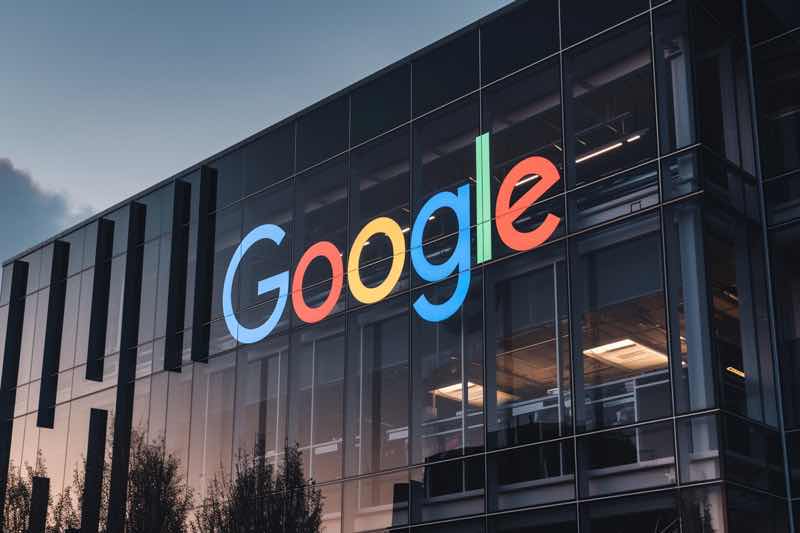
Measuring Success: Comparing ROI of Google Ads and Traditional Advertising
When it comes to measuring the success of your advertising campaigns, comparing the return on investment (ROI) of Google Ads and traditional advertising is crucial. While traditional advertising methods have been around for decades, Google Ads has revolutionized the game with its targeted approach and data-driven strategies.
So, how does Google Ads stack up against traditional advertising when it comes to ROI? Let’s take a closer look:
- Cost-Effectiveness: Google Ads offers a cost-effective advantage over traditional advertising channels. With Google Ads, you have control over your budget and can set your own bids, ensuring that you only pay when someone clicks on your ad. This allows for better cost management and the ability to maximize your ROI.
- Targeted Advertising: One of the key strengths of Google Ads is its ability to target specific audiences. Through keyword targeting, location targeting, and audience targeting, you can reach the right people at the right time, increasing the chances of conversion and improving your ROI.
- Data-Driven Optimization: Google Ads provides valuable insights and data that can be used to optimize your campaigns. By analyzing metrics such as click-through rates, conversions, and ROI, you can make data-driven decisions to improve the performance of your ads and maximize your ROI.
- Flexibility and Adaptability: Unlike traditional advertising methods, Google Ads offers flexibility and adaptability. You can easily make changes to your ads, adjust your budget, and test different strategies to find what works best for your business. This agility allows for continuous optimization and the ability to stay ahead of the competition.
In conclusion, when it comes to measuring the success of your advertising campaigns, Google Ads offers a competitive advantage over traditional advertising methods. With its cost-effectiveness, targeted approach, data-driven optimization, and flexibility, Google Ads has become a powerful tool for businesses looking to maximize their ROI and stay ahead in the digital advertising landscape.
The Changing Landscape: How Google Ads Disrupted Traditional Advertising Channels
The landscape of advertising has undergone a dramatic transformation with the advent of Google Ads. Traditional advertising channels have been disrupted, and advertisers are now navigating a new era of digital marketing. This shift has brought both challenges and opportunities for businesses looking to reach their target audience.
One of the key advantages of Google Ads is its ability to target specific demographics and interests. Advertisers can now tailor their campaigns to reach the right people at the right time, resulting in higher conversion rates and a more cost-effective advertising strategy.
In addition, Google Ads has introduced a dynamic auction system, where advertisers bid for ad slots based on relevance and bid amount. This has leveled the playing field and allowed businesses of all sizes to compete for ad space. As a result, advertising costs have become more competitive, benefiting advertisers who can optimize their campaigns effectively.
However, with these advancements come challenges. The rise of click fraud has become a concern for advertisers, as it can lead to wasted ad spend and inaccurate performance metrics. Advertisers need to stay vigilant and implement strategies to mitigate the risk of click fraud.
To adapt to the Google Ads ecosystem and optimize advertising budgets, businesses should regularly analyze campaign performance, test different strategies, and leverage data and analytics. By staying informed and proactive, advertisers can make the most of Google Ads and stay ahead in the ever-changing landscape of digital advertising.
The Future of Advertising: Is Google Ads the New Norm?
As we look ahead to the future of advertising, it’s clear that Google Ads is here to stay. With its ability to target specific audiences, track performance metrics, and provide valuable insights, Google Ads has revolutionized the advertising industry. But what can we expect in the coming years?
Here are some trends and predictions for the future of Google Ads:
- More AI-powered features: Automation and smart bidding will become even more popular, allowing advertisers to optimize their campaigns with ease.
- Emphasis on broad match: Google Ads will place a greater emphasis on broad match keywords, allowing advertisers to reach a wider audience.
- Video advertising growth: Video advertising will continue to grow, with more businesses leveraging the power of visual content to engage their target audience.
- Search becoming more visual: Search results will take on a more visual experience, with images and interactive elements playing a larger role.
As the digital landscape continues to evolve, it’s crucial for businesses to stay updated with the latest trends and adapt their strategies accordingly. By embracing the power of Google Ads and staying ahead of the curve, businesses can continue to drive success in their advertising campaigns.
Google Ads and traditional advertising are two popular methods businesses use to promote their products and services. While traditional advertising has been around for decades, Google Ads has emerged as a powerful pemasaran digital tool.
Both methods have their advantages and disadvantages, and the choice between them depends on various factors such as target audience, budget, and marketing goals. At CWORKS, we understand the importance of effective advertising strategies in today’s competitive market. Contact us now through our contact page to discuss your business needs and achieve remarkable success together with CWORKS. Let’s get started!
Kesimpulan
Google Ads has revolutionized the advertising landscape, impacting both costs and outcomes. By leveraging targeted campaigns and strategic bidding, businesses have seen significant increases in web traffic and sales conversion rates. However, navigating the ever-shifting landscape of Google Ads costs can be a challenge. It requires informed guesswork and a deep understanding of the key factors that influence costs, such as industry competition and keyword selection.
Small businesses can optimize their advertising expenses by rigorously assessing their budget, monitoring campaign performance, and staying ahead of industry trends. With the right approach, even limited budgets can yield substantial returns on investment. So, embrace the power of Google Ads, be proactive in managing your campaigns, and watch your business thrive in the digital age.
Pertanyaan Umum
How has Google Ads revolutionized advertising strategies?
Google Ads has revolutionized advertising strategies by shifting from traditional to digital methods, allowing for targeted advertising and maximizing ROI.
How has Google Ads impacted advertising costs?
Google Ads has lowered advertising costs by providing a cost-effective advantage and introducing competition in the advertising industry.
What are the challenges in cost management due to Google Ads?
One of the challenges in cost management due to Google Ads is the rise of click fraud, which requires strategies to address and mitigate.
How can businesses optimize their budget in the Google Ads ecosystem?
Businesses can optimize their budget in the Google Ads ecosystem by implementing strategies for budget optimization, such as targeted campaigns and strategic bidding.
What is the impact of Google Ads on traditional advertising channels?
Google Ads has disrupted traditional advertising channels by providing a more efficient and data-driven approach, leveraging analytics for better campaign performance.
Is Google Ads the future of advertising?
Google Ads has become a dominant force in the advertising industry and is likely to continue shaping the future of advertising.





















































































